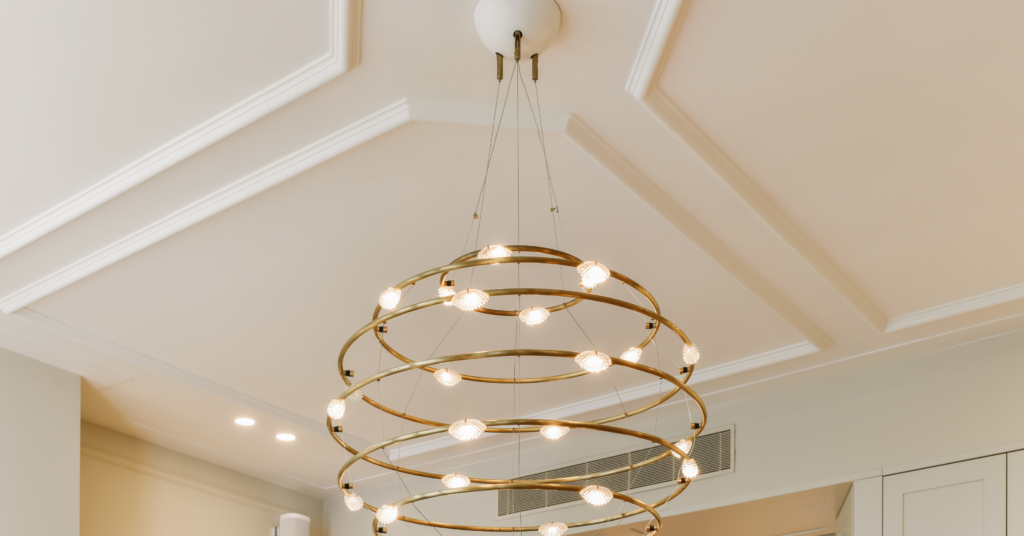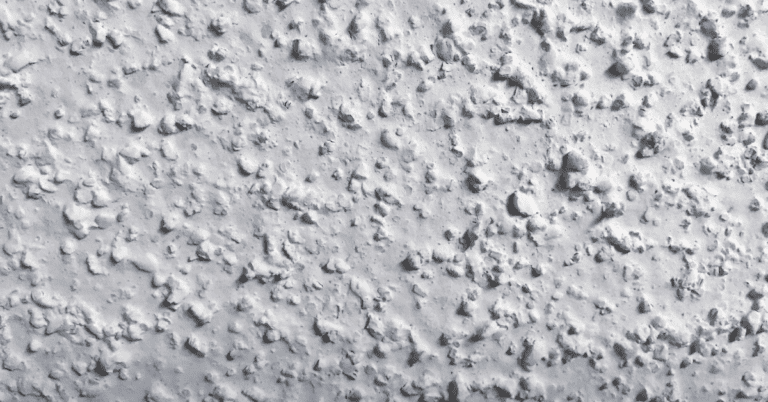Asbestos-containing textured ceilings, often referred to as “popcorn ceilings” or “acoustic ceilings,” have been a common feature in residential and commercial buildings constructed before the late 1970s. While these ceilings were once popular for their fire-resistant and sound-absorbing properties, they pose significant health risks due to the presence of asbestos fibers.
Asbestos, a naturally occurring mineral, was widely used in construction materials before its harmful effects on human health were fully understood. Here, we delve deeper into the health risks associated with asbestos-containing textured ceilings and the importance of safe handling and removal.
Asbestos fibers, when disturbed, can become airborne and easily inhaled into the lungs, where they may cause a range of serious health conditions. In addition to asbestos risks, repairing damaged textured ceilings ensures that your home remains safe and structurally sound. The primary health risks associated with asbestos-containing textured ceilings include:
Asbestosis
A chronic lung disease characterized by inflammation and scarring of lung tissue. Prolonged exposure to asbestos fibers can lead to the development of asbestosis, which may manifest with symptoms such as shortness of breath, persistent cough, chest tightness, and respiratory issues. The scarring of lung tissue can impair lung function and lead to respiratory failure in severe cases.
Lung Cancer
Inhalation of asbestos fibers significantly increases the risk of developing lung cancer, particularly in individuals who smoke. Asbestos exposure is a well-established risk factor for lung cancer, and the risk is further elevated in smokers. Symptoms of lung cancer may include persistent coughing, chest pain, shortness of breath, wheezing, coughing up blood, and recurrent respiratory infections.
Mesothelioma
A rare and aggressive form of cancer that affects the lining of the lungs, abdomen, or heart. It is primarily caused by asbestos exposure and has a poor prognosis. Mesothelioma typically presents with symptoms such as chest pain, shortness of breath, abdominal swelling, unexplained weight loss, and fatigue. The latency period between asbestos exposure and the development of mesothelioma can be several decades.
Other Respiratory Issues

Exposure to asbestos fibers can also lead to various other respiratory problems, including pleural plaques, pleural effusion, and difficulty breathing. Pleural plaques are areas of thickened tissue on the pleura (the membranes surrounding the lungs) and may not cause symptoms but can lead to chest pain or breathing difficulties. Pleural effusion is the buildup of fluid between the layers of the pleura and can cause chest pain, shortness of breath, and coughing.
Increased Risk for Other Cancers
In addition to lung cancer and mesothelioma, asbestos exposure has been associated with an increased risk of developing cancers of the larynx, esophagus, stomach, colon, and rectum. The mechanism by which asbestos contributes to the development of these cancers is not fully understood but is thought to involve chronic inflammation and genetic damage caused by asbestos fibers.
Identifying & Removal Process

Identifying asbestos-containing textured ceilings can be challenging without professional testing, as asbestos fibers are microscopic and not visible to the naked eye. However, certain indicators may suggest the presence of asbestos, such as the age of the building, the appearance of the texture, and building records.
To confirm the presence of asbestos, it’s essential to have a sample tested by a certified laboratory. If asbestos-containing textured ceilings are discovered, it’s crucial to take appropriate precautions to minimize the risk of exposure and ensure safe removal. Repairing damaged textured ceilings promptly can prevent the release of harmful asbestos fibers.
If asbestos-containing textured ceilings are discovered, it’s crucial to take appropriate precautions to minimize the risk of exposure and ensure safe removal. Handling asbestos-containing materials improperly can release harmful fibers into the air, increasing the risk of health hazards. Safe removal of asbestos-containing textured ceilings should only be performed by trained and licensed professionals like All Painting who follow strict safety protocols.
During asbestos removal, containment measures are implemented to isolate the work area and prevent the spread of asbestos fibers. Skipping proper painting prep can lead to various issues, just as skipping proper asbestos handling can lead to serious health risks.
During asbestos removal, containment measures are implemented to isolate the work area and prevent the spread of asbestos fibers. Workers wear specialized personal protective equipment, and the material is wetted down to minimize fiber release. After removal, thorough cleaning and decontamination procedures are carried out to ensure the area is safe for reoccupation.
Conclusion
Asbestos-containing textured ceilings pose significant health risks due to the presence of asbestos fibers. Homeowners and building occupants need to be aware of these risks and take appropriate measures to address them safely. By identifying and safely removing asbestos-containing materials, we can mitigate the health hazards associated with asbestos exposure and protect the well-being of individuals and communities.

If you suspect your home has asbestos-containing textured ceilings, it’s crucial to address the issue promptly to protect your health and the health of your loved ones. Our professional team is experienced in the safe removal and handling of asbestos materials.
We proudly serve numerous areas including Maple Ridge painters, Langley painters, Richmond painters, New Westminster painters, West Vancouver painters, North Vancouver painters, Port Coquitlam painters, Coquitlam painters, Port Moody painters, Surrey painters, Burnaby painters, and Vancouver painters. Contact us today to schedule a consultation and ensure your home is safe and asbestos-free.

